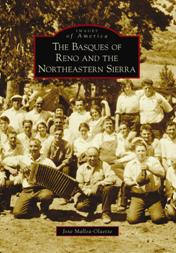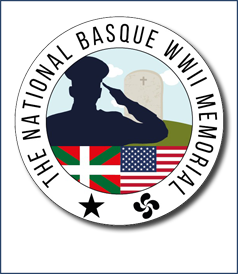Astero
The Basques of Reno and the Northeastern Sierra
by Joxe Mallea
Local historian Joxe Mallea-Olaetxe pens tribute to his ethnic roots
 Thanks to DNA research, the Basques of the Pyrenees Mountains are no longer the “mystery people.” Thirty-five thousand years ago, they traveled from Central Asia to Western Europe, where they still live, speaking a language unlike any other. After helping Columbus discover America, Basques spread out from the Pampas to California and beyond into the Sierra and Reno, Nevada.
Thanks to DNA research, the Basques of the Pyrenees Mountains are no longer the “mystery people.” Thirty-five thousand years ago, they traveled from Central Asia to Western Europe, where they still live, speaking a language unlike any other. After helping Columbus discover America, Basques spread out from the Pampas to California and beyond into the Sierra and Reno, Nevada.
The Basques of Reno and the Northeastern Sierra celebrates the dynamic heritage of this ethnic group’s dynamic history in over 200 vintage photographs.
Local historian Joxe Mallea-Olaetxe pens tribute to his ethnic roots
 Author Joxe Mallea-Olaetxe grew up in Euskal Herria hearing stories about Idaho, Nevada, and California told by returnee ex-sheepherders. After receiving a Ph.D. from the University of Nevada, Reno, he began video-documenting the history of the Basque community. He continues working with federal agencies that manage the public lands where a century of Basque history remains carved. Author Joxe Mallea-Olaetxe grew up in Euskal Herria hearing stories about Idaho, Nevada, and California told by returnee ex-sheepherders. After receiving a Ph.D. from the University of Nevada, Reno, he began video-documenting the history of the Basque community. He continues working with federal agencies that manage the public lands where a century of Basque history remains carved.
Thanks to DNA research, the Basques of the Pyrenees Mountains are no longer the “mystery people.” Thirty-five thousand years ago, they traveled from Central Asia to Western Europe, where they still live, speaking a language unlike any other. After helping Columbus discover America, Basques spread out from the Pampas to California and beyond into the Sierra and Reno, Nevada.
The Basques of Reno and the Northeastern Sierra celebrates the dynamic heritage of this ethnic group’s dynamic history in over 200 vintage photographs.
Highlights of The Basques of Reno and the Northeastern Sierra:
-
Features old world Basques, known as the Indians of Europe, dating back to the Paleolithic Age, when it was not Europe yet but Euskal Herria (Basque Speaking Country).
-
In the American West, the Basques will be forever known as “the sheepherders,” who for a century herded millions of sheep in the wild empty spaces.
-
During their long summer days in the high country, the Basques used aspen bark to leave behind carved evidence of their identities and of their lonely passing through the landscape. Though about 30,000 carvings have been recorded, an estimated 80 percent disappeared before ever being recorded.
Avalable at area bookstores, independent retailers, and on-line retailers, or through Arcadia Publishing at (888) 313-2665 or www.arcadiapublishing.com
|
|
 Thanks to DNA research, the Basques of the Pyrenees Mountains are no longer the “mystery people.” Thirty-five thousand years ago, they traveled from Central Asia to Western Europe, where they still live, speaking a language unlike any other. After helping Columbus discover America, Basques spread out from the Pampas to California and beyond into the Sierra and Reno, Nevada.
Thanks to DNA research, the Basques of the Pyrenees Mountains are no longer the “mystery people.” Thirty-five thousand years ago, they traveled from Central Asia to Western Europe, where they still live, speaking a language unlike any other. After helping Columbus discover America, Basques spread out from the Pampas to California and beyond into the Sierra and Reno, Nevada.



















































































































